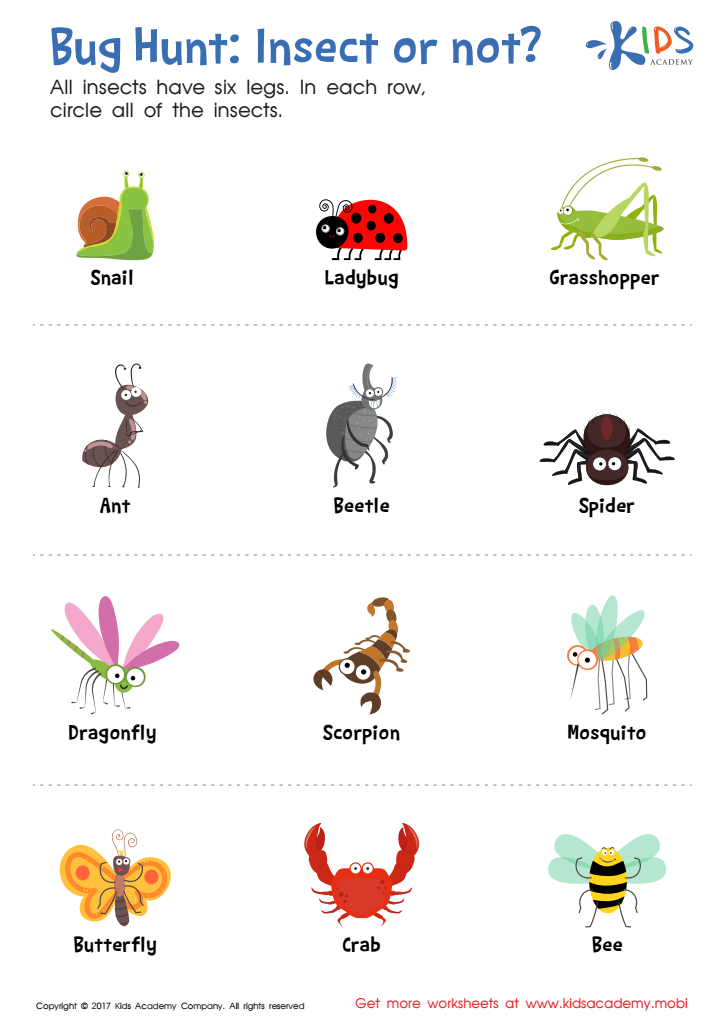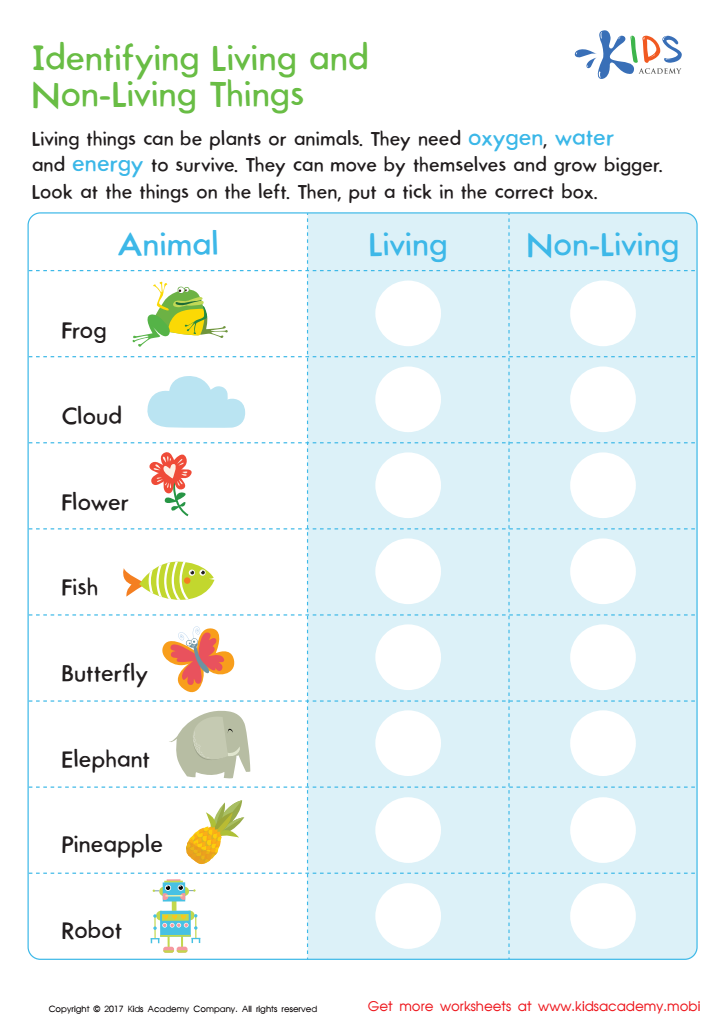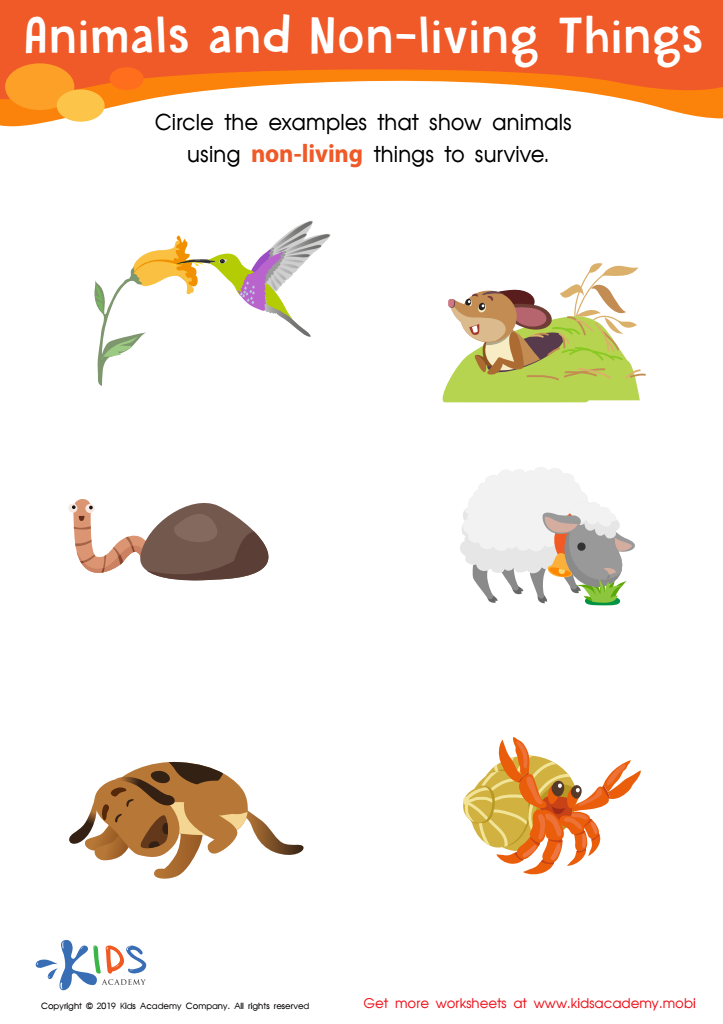Categorization skills Normal Animals Worksheets for Ages 3-5
3 filtered results
-
From - To
Develop essential cognitive skills with our Caterization Skills Normal Animals Worksheets tailor-made for children ages 3-5. These engaging and interactive worksheets from Kids Academy help young learners recognize and differentiate between various animals, fostering crucial categorization and sorting abilities. Designed by educational experts, each activity combines play with learning to enhance observational skills and build foundational science knowledge. Perfect for preschoolers and kindergarteners, these appealing printable worksheets incorporate colorful images and fun tasks to keep little ones enthusiastic about discovering and sorting normal animals. Start your child's learning adventure today with Kids Academy's expertly crafted resources!




Identifying Living or Non–living Worksheet


Animals and Non-Living Things Worksheet
Categorization skills are a fundamental aspect of early cognitive development, crucial for children aged 3-5. These skills involve the ability to group objects, animals, or concepts based on shared characteristics, which is essential for organizing knowledge and making sense of the world.
Teaching young children to categorize "normal animals" provides a concrete and engaging way to develop these critical thinking abilities. When children group animals according to characteristics like size, habitat, or diet, they practice important cognitive processes such as observation, comparison, and generalization. This supports their ability to notice patterns and build associations, which are foundational for more complex learning.
Moreover, categorization encourages language development. As children discuss why a dog, cat, or squirrel are all "normal" household animals, they expand their vocabulary and learn to articulate their thoughts coherently. This fosters communication skills essential for social interactions and academic success.
Parents and teachers should care about these skills because they lay the groundwork for future learning across various domains. Children with well-developed categorization skills frequently demonstrate better problem-solving abilities and adaptability. Thus, investing time in teaching children how to categorize animals not only enhances their current cognitive abilities but also prepares them for lifelong learning and critical thinking.
 Assign to My Students
Assign to My Students















